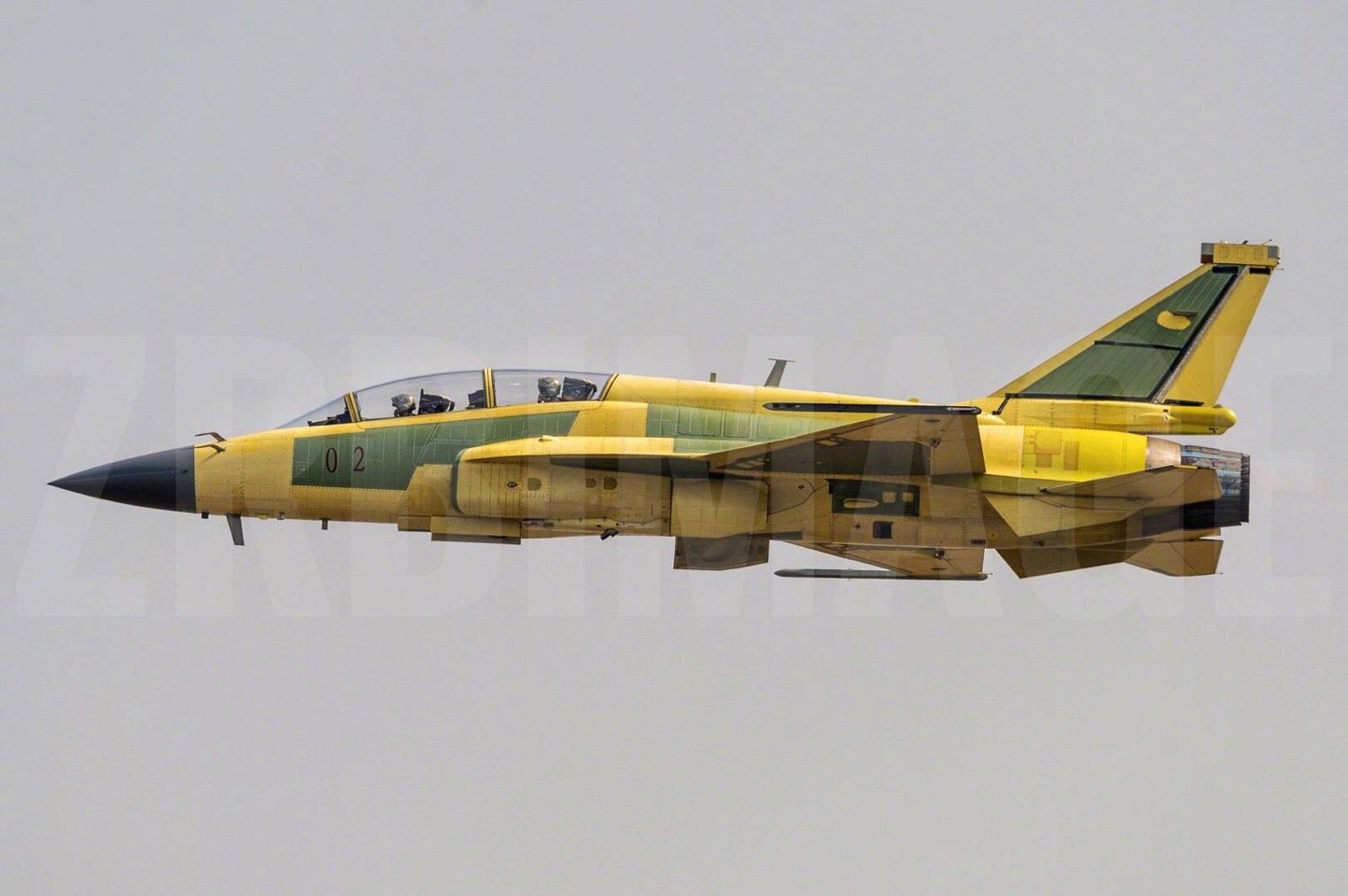CHENGDU REPORTEDLY ACHIEVES MILESTONE IN JF-17 BLOCK-III DEVELOPMENT
by Bilal Khan
Jan 01, 2018

JF-17B
Reports from Chinese news sources indicate that Chengdu Aircraft Industry Group (CAIG) reached a major milestone in the development of the JF-17 Thunder Block-III – i.e. entering the “preliminary design stage.”
The Block-III is slated as the JF-17’s first major upgrade involving new electronic subsystems, including an active electronically-scanned array (AESA) radar, a new integrated electronic warfare (EW) system, three-axis fly-by-wire (FBW) digital flight control system and helmet-mounted display and sight (HMD/S).
According to Sina News, CAIG has successfully determined an optimal configuration for the Block-III’s new subsystems, ensuring that it provides markedly improved capabilities.
Reported changes include modifications to the airframe for an AESA radar – potentially Nanjing Research Institute of Electronics Technology’s (NRIET) KLJ-7A – new transmit/receive modules (TRM) (related to the EW system) embedded in the airframe and change in “orientation of the cockpit ventilation pipe.”
CAIG is carrying out the work on a relatively compressed schedule, potentially aligning with the Pakistan Air Force’s (PAF) plan to have the Block-III enter production in 2019 or 2020.
Currently, the PAF intends to procure 50 Block-IIIs.
Notes & Comments:
Unless another fighter is procured, it seems that the JF-17 Block-III will be the first fighter platform in the PAF to use an AESA radar. In contrast to legacy mechanically-steered radars, AESA radars use hundreds of individual TRMs, each serving as a radar in its own transmit frequency. With many frequencies in use simultaneously with each pulse, it is more difficult for enemy EW systems to jam an AESA radar.
The cost of an AESA radar comes in its increased weight, which can be a result of increased cooling as well as power requirements. It is unclear how CAIG will compensate for this in the Block-III, but with the twin-seat JF-17B, CAIG supplanted the hybrid flight control system (which used mechanical controls for bank and yaw) with a three-axis digital FBW system. This might have reduced weight and helped with creating space for additional fuel (to compensate for the area lost used by the second seat).
Though speculative, a route for the Block-III could be to mirror the approach taken by Mikoyan with the MiG-29KUB, MiG-29M2 and MiG-35 by using the twin-seat JF-17B as the direct basis for the Block-III. The Block-III’s single-seat variant could use the same airframe as the JF-17B, but with the rear-seat replaced with an extension of the fuselage’s spine. This approach could help reduce development lead-time.
https://quwa.org/2018/01/01/chengdu-reportedly-achieves-milestone-in-jf-17-block-iii-development/
by Bilal Khan
Jan 01, 2018
JF-17B
Reports from Chinese news sources indicate that Chengdu Aircraft Industry Group (CAIG) reached a major milestone in the development of the JF-17 Thunder Block-III – i.e. entering the “preliminary design stage.”
The Block-III is slated as the JF-17’s first major upgrade involving new electronic subsystems, including an active electronically-scanned array (AESA) radar, a new integrated electronic warfare (EW) system, three-axis fly-by-wire (FBW) digital flight control system and helmet-mounted display and sight (HMD/S).
According to Sina News, CAIG has successfully determined an optimal configuration for the Block-III’s new subsystems, ensuring that it provides markedly improved capabilities.
Reported changes include modifications to the airframe for an AESA radar – potentially Nanjing Research Institute of Electronics Technology’s (NRIET) KLJ-7A – new transmit/receive modules (TRM) (related to the EW system) embedded in the airframe and change in “orientation of the cockpit ventilation pipe.”
CAIG is carrying out the work on a relatively compressed schedule, potentially aligning with the Pakistan Air Force’s (PAF) plan to have the Block-III enter production in 2019 or 2020.
Currently, the PAF intends to procure 50 Block-IIIs.
Notes & Comments:
Unless another fighter is procured, it seems that the JF-17 Block-III will be the first fighter platform in the PAF to use an AESA radar. In contrast to legacy mechanically-steered radars, AESA radars use hundreds of individual TRMs, each serving as a radar in its own transmit frequency. With many frequencies in use simultaneously with each pulse, it is more difficult for enemy EW systems to jam an AESA radar.
The cost of an AESA radar comes in its increased weight, which can be a result of increased cooling as well as power requirements. It is unclear how CAIG will compensate for this in the Block-III, but with the twin-seat JF-17B, CAIG supplanted the hybrid flight control system (which used mechanical controls for bank and yaw) with a three-axis digital FBW system. This might have reduced weight and helped with creating space for additional fuel (to compensate for the area lost used by the second seat).
Though speculative, a route for the Block-III could be to mirror the approach taken by Mikoyan with the MiG-29KUB, MiG-29M2 and MiG-35 by using the twin-seat JF-17B as the direct basis for the Block-III. The Block-III’s single-seat variant could use the same airframe as the JF-17B, but with the rear-seat replaced with an extension of the fuselage’s spine. This approach could help reduce development lead-time.
https://quwa.org/2018/01/01/chengdu-reportedly-achieves-milestone-in-jf-17-block-iii-development/

